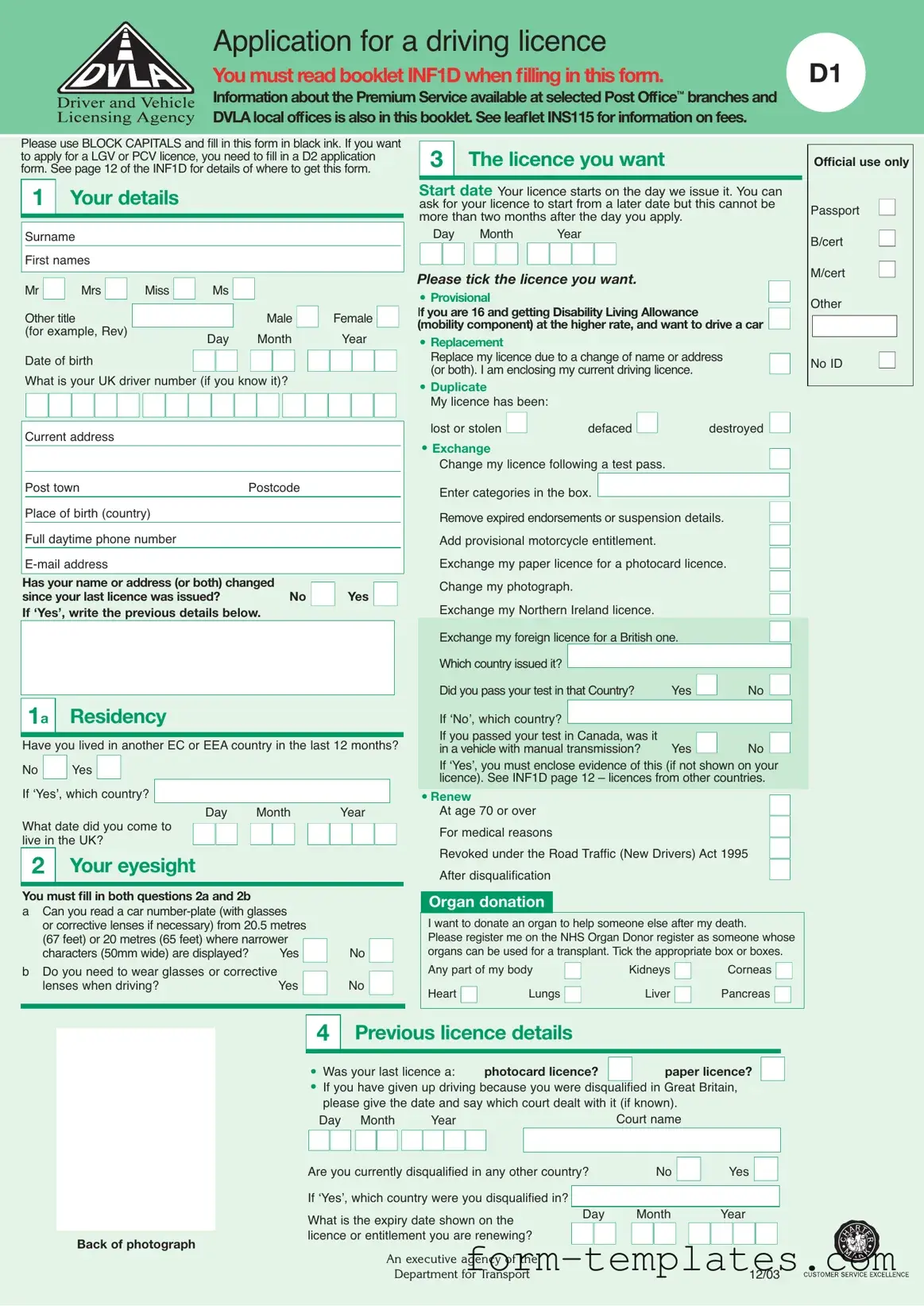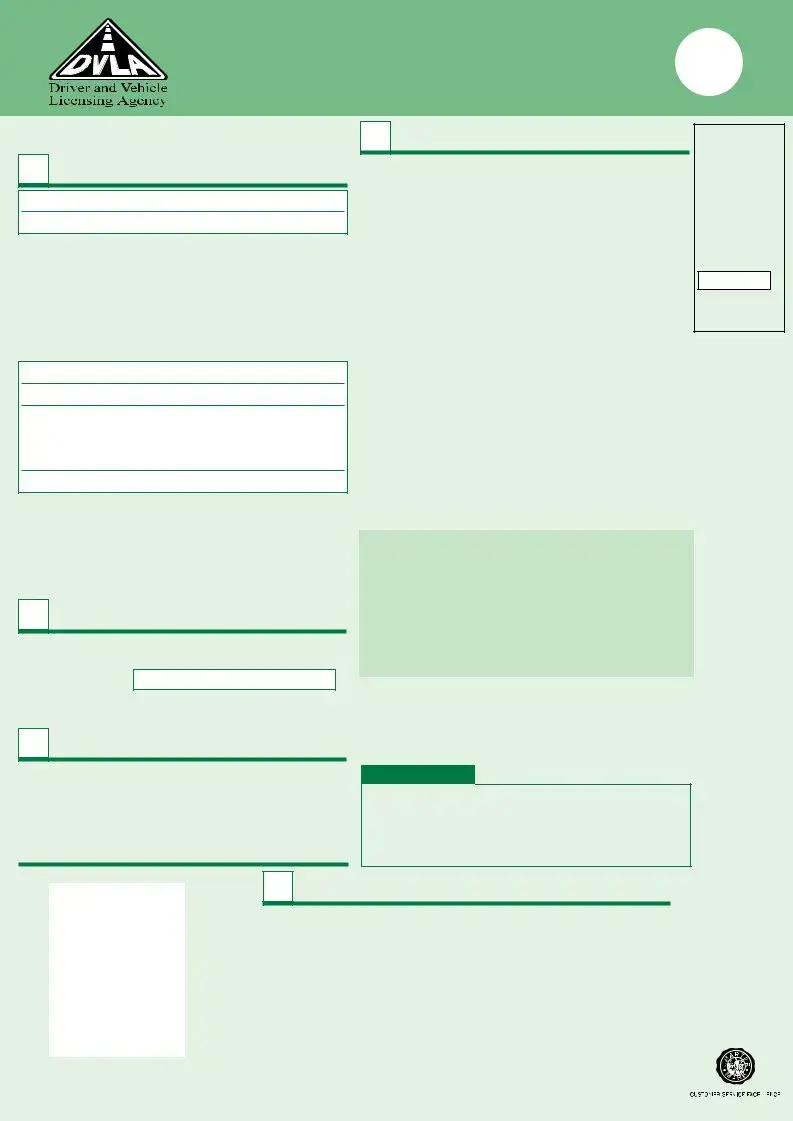The D1 DVLA form is primarily used to apply for a driving licence in the UK. This includes various types of applications such as provisional licences, replacements for lost or stolen licences, and exchanges of foreign licences for a British one. It is essential for anyone looking to obtain or renew their driving licence to complete this form accurately.
Before starting to fill out the D1 form, it is advisable to read the accompanying booklet INF1D. This booklet provides detailed instructions on how to complete the form and outlines any additional information you may need, such as the Premium Service available at selected Post Office branches and DVLA local offices.
How do I ensure that my application is processed smoothly?
To ensure a smooth application process, follow these guidelines:
-
Use BLOCK CAPITALS and black ink when filling out the form.
-
Double-check that all required sections are completed, especially your personal details and eyesight information.
-
Include the correct fee as outlined in the INS115 leaflet.
-
Attach any necessary identity documents and ensure they are originals, not photocopies.
What are the eyesight requirements for applying for a driving licence?
When applying for a driving licence, you must confirm that you can read a car number plate from a distance of 20.5 meters (67 feet) or 20 meters (65 feet) if narrower characters are displayed. If you need glasses or corrective lenses to meet this requirement, you must indicate this on the form.
What if I have changed my name or address since my last licence was issued?
If you have changed your name or address since your last licence was issued, you must indicate this on the D1 form. You will also need to provide your previous details in the designated section of the form. This helps ensure that your application is processed accurately and reflects your current information.
What should I do if I have a medical condition that could affect my ability to drive?
If you have a medical condition that may affect your fitness to drive, you must complete either Part A or Part B of the health section on the D1 form. If you have previously informed the DVLA about a medical condition, you should fill out Part B. If this is your first time disclosing a condition, complete Part A and check all applicable boxes regarding your health history.
To confirm your identity, you must provide original documents such as a passport, UK birth or adoption certificate, or an EC/EEA identity card. If your current name differs from that on these documents, you will also need to provide proof of the name change, such as a marriage certificate or deed poll.
What happens after I submit my D1 application?
After submitting your D1 application, the DVLA will process it and may contact you if additional information is needed. If everything is in order, you will receive your new driving licence in the mail. It is important to keep a record of your application and any documents submitted in case you need to follow up.
Yes, there is a fee associated with submitting the D1 DVLA form. The exact amount can be found in the INS115 leaflet, which provides detailed information on fees and payment methods. Ensure that you include the correct fee with your application to avoid delays in processing.




